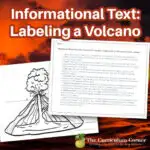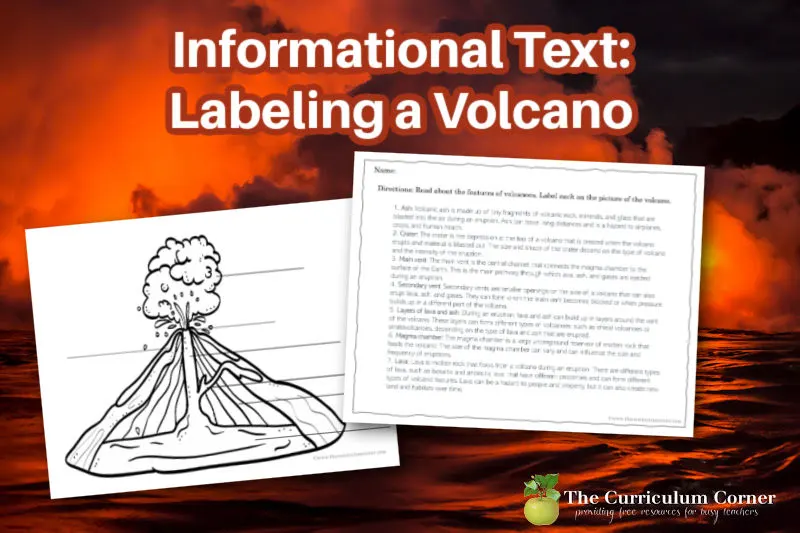Help children read about and then label the parts of a volcano with this activity.
Students will be asked to read the informational text and then use the reading to label the parts of a volcano.
This is an activity that allows students to practice reading and applying the what they read.
This is another free resource for teachers and homeschool families from The Curriculum Corner.
Parts of a volcano
This activity requires students to label the following parts of a volcano:
1.Ash: Volcanic ash is made up of tiny fragments of volcanic rock, minerals, and glass that are blasted into the air during an eruption. Ash can travel long distances and is a hazard to airplanes, crops, and human health.
2. Crater: The crater is the depression at the top of a volcano that is created when the volcano erupts and material is blasted out. The size and shape of the crater depend on the type of volcano and the intensity of the eruption.
3. Main vent: The main vent is the central channel that connects the magma chamber to the surface of the Earth. This is the main pathway through which lava, ash, and gases are ejected during an eruption.
4. Secondary vent: Secondary vents are smaller openings on the side of a volcano that can also erupt lava, ash, and gases. They can form when the main vent becomes blocked or when pressure builds up in a different part of the volcano.
5. Layers of lava and ash: During an eruption, lava and ash can build up in layers around the vent of the volcano. These layers can form different types of volcanoes, such as shield volcanoes or stratovolcanoes, depending on the type of lava and ash that are erupted.
6. Magma chamber: The magma chamber is a large underground reservoir of molten rock that feeds the volcano. The size of the magma chamber can vary and can influence the size and frequency of eruptions.
7. Lava: Lava is molten rock that flows from a volcano during an eruption. There are different types of lava, such as basaltic and andesitic lava, that have different properties and can form different types of volcanic features. Lava can be a hazard to people and property, but it can also create new land and habitats over time.
Completing this activity
This was a great way for my students to practice using text to find answers. They found it challenging but it was definitely good practice.
I liked that as they read, some of their answers changed. The students who worked to make changes as they read, were able to complete the activity correctly.
I did not allow my students to use technology as they worked on this. Their iPads were in their lockers. They were frustrated at first because they knew they could quickly look up a diagram and label. I wanted them to have to read in order to find the answers.
It led to a lot of good discussions and I could hear their thinking as they were working.
When completed, we did go over their answers in class to help them make sure they didn’t miss details as they read.
I did accidentally print this front to back in my own room. I often do this to save paper. However, in this case, not having to flip back and forth would have been better for my students.
You can download this free resource by clicking on the green apples below:
As with all of our resources, The Curriculum Corner creates these for free classroom use. Our products may not be sold. You may print and copy for your personal classroom use. These are also great for home school families!
You may not modify and resell in any form. Please let us know if you have any questions.



